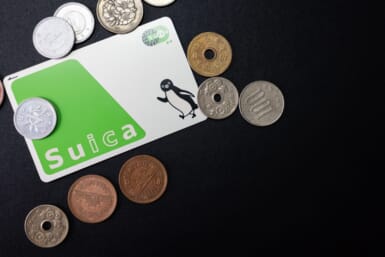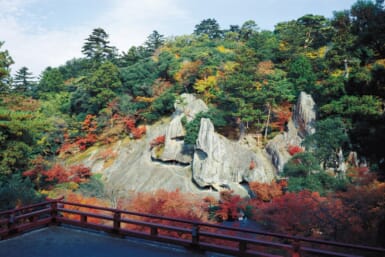by Eamonn Fingleton
Six years ago I published a book that won a certain fame/notoriety for its provocative take on U.S.-Japan competition. The book’s title said it all: Blindside: Why Japan Is Still on Track to Overtake the U.S. by the Year 2000.
Even without that eye-popping title, there was plenty in the book to generate controversy. Certainly some critics were less than friendly, professing to see a “Yellow Peril” subtext in my cautions about Japan’s hidden economic strengths, about its export-or-die policies, and its long record of surprising the West.
In general, however, the book’s very different take on Japan was well received. A prestigious journal of diplomacy published a large excerpt from it. The editors of a top American business magazine voted it one of the best books of 1995. In Washington, those who commended the book included the President of the United States.
So much for the joys of authorship. But with the passing of anno domini 2000, I have run out of road on that prediction about Japan overtaking America. It is time therefore for a reckoning. Given the torrential flows of bad economic news we have had from Japan in the last five years, shouldn’t I now concede I was wrong? Actually, no—not a bit of it. Strange as it may seem to those who have not read the book, I am more convinced than ever that my highly counter-intuitive analysis was on the money.
Before looking at the substance of my case, first let’s be clear on one thing: Japan has certainly suffered serious financial strains in the last decade. I would be the last person to deny this. In fact, in articles in Euromoney magazine in the late 1980s, I outspokenly predicted Japan’s financial problems: in particular I argued that Japan’s then super-inflated asset valuations were unsustainable and that in securing loans on such valuations Japanese banks were setting themselves up for a spectacular crash.
In the first months of 1990, the crash duly arrived. The Tokyo stock market began a precipitous descent from which it has yet— fully 11 years later— to recover.
As I argued in Blindside, however, thanks to robust firewalls built into the Japanese economy, the problems created by the crash have been tightly contained within the financial sector. Thus while the American press has in recent years focused its economic coverage largely on Japan’s devastated stock market, many of the more important areas of the Japanese economy have been quietly going from strength to strength.
Perhaps the most surprising area of strength has been consumption. With the exception of a tiny minority of bankrupt speculators, most Japanese citizens enjoy considerably higher living standards than a decade ago. To anyone who remembers as I do how ordinary Japanese citizens really lived in the 1980s, that is surely obvious from just a casual glance around.
Take the cars on Japanese roads. Nearly 2.2 million more Japanese households now own a car than a decade ago. Moreover the quality of cars the Japanese drive these days is much higher than in the 1980s. Cars are not considerably larger on average, but are more powerful and better equipped (in many cases these days with CD players, television sets and navigation systems). The improvement is particularly obvious in the case of Japan’s executive class, who a decade ago showed up to their appointments in such embarrassingly frumpy jalopies as the Toyota Century. Now the Celsior and the Infiniti are more their style.
The Japanese people’s increasing affluence is also notably apparent in the range and quality of their electronic gadgetry. Fully one-third of Japanese households now boast a video camera, for instance, more than double the ratio of a decade ago. Similar or larger increases are apparent in the penetration of everything from satellite dishes to DVD players. Then there is the extraordinarily high ownership of mobile phones, which are now more than 100 times more prevalent in Japan than in the early 1990s.
Not only are mobile phones a lot more prevalent in Japan than in the United States but also they are generally of a considerably higher quality (as evidenced both in their ultra-compact size and in their superior capabilities).
The Japanese have also done well on that ultimate measure of consumer welfare: life expectancy. Their life expectancy has increased by fully one year in the last decade with the result that they now outlive Americans by fully four years. Not bad for a nation whose life expectancy in the 1930s trailed that of white Americans by 15 years.
On vacation, too, Japanese affluence is obvious. Fully 12,973,000 Japanese citizens vacationed abroad in 1998, the last year for which figures are available. That represented an increase of 59.9 percent on 1989.
Countless other examples could be cited of how much Japanese living standards have improved in recent years. But the point should already be clear. A question therefore arises. Why, if Japanese consumers are doing so well, has not this been reflected in better official economic growth numbers? After all, Japan’s GDP growth, though not nearly as poor as readers of the “collapsing Japan” stories in the American business press might imagine, has been lackluster at best.
A key point is that much of the boost in Japan’s living standards in recent years has come not from higher incomes, but rather from falling prices. As such, the progress is largely invisible to GDP statisticians. What we are seeing is best termed a “falling price” boom. As such, Japan’s experience in the last decade has been very similar to the periodic financial slumps the United States experienced in its time of fastest economic progress in the latter half of the 19th century. Remember that although such slumps were devastating for financial speculators, ordinary Americans quietly enjoyed large leaps in their living standards thanks to big reductions in price levels.
One thing is clear: prices of many of the goods and services the Japanese buy have fallen dramatically in the last decade. Particularly big price cuts have been noticeable not only in electronic gadgets and household electrical goods, but also alcoholic drinks of all sorts (beer prices have fallen by one quarter, for instance). There have been big reductions also in specialty foods, in fashion goods, sporting goods, in telephone charges, and in overseas vacations.
So much for how the Japanese economic system has served domestic consumers. But from the point of view of the Blindside analysis, the key question is how the Japanese economic system has been doing in external markets. As Blindside predicted, the financial strains of the 1990s did nothing to undermine the Japanese economic system’s exporting prowess. In fact, Japan’s current account surpluses in the 1990s totaled 2.1 times their level of the 1980s. Meanwhile, America’s trade deficits deteriorated dramatically during the 1990s. For 2000, the American current account deficit is likely to total about 4.5 percent of national output, by far the worst trade performance in American history. By contrast, the worst deficit in the 1980s was just 3.6 percent of national output, a record that was considered disastrously large at the time.
Both Japan’s surpluses and America’s deficits stem largely from a single cause: a rapidly growing dependence by American manufacturers on Japanese counterparts for advanced components and high-tech materials. When you remember that wages in Japan are now 20 to 30 percent higher than in the United States, it is clear that the outsourcing trend reflects a dramatic shift in economic leadership from the United States to Japan.
In a word, American manufacturing is now deeply hollowed out to the point that where today, Japan’s total manufacturing output has passed that of the United States. All this has major implications for exchange rates: basically the trade imbalances are telling us that though the yen has been generally strong in the last decade, it is still massively undervalued against the dollar.
Perhaps the ultimate measure of the changing economic balance between the United States and Japan concerns savings. Helped by the yen’s trade-fuelled strength (the yen rose 39 percent against the dollar in the 1990s), Japan is now by far the world’s largest saver. Thus, at last count, its savings flows were nearly double those of the United States. In fact, Japan now accounts for about one-third of all the world’s new savings each year and, as such, is the dominant supplier of capital to the world economy.
It is hard to exaggerate what this means in terms of a nation’s ability to project economic power abroad: in essence, Japan is now exporting more capital in real terms than any nation since America’s days of global economic dominance in the 1950s. While the Japanese economic system is loath to draw attention to this fact for fear of fanning protectionist sentiment in Washington, the results are starkly apparent in little-noticed but crucial IMF financial statistics for national external balances. These show that in the first nine years of the 1990s, Japan’s net external assets jumped from $294 billion to $1,153 billion.
Meanwhile America’s net external liabilities rocketed from $49 billion to $1,537 billion. In the long run, this changing balance of financial power will be about the only thing historians will remember about U.S.-Japan economic rivalry in the last decade. Yet it was the one thing Western observers utterly overlooked at the time.
* * *
Eamonn Fingleton is a Tokyo-based author whose most recent book, In Praise of Hard Industries: Why Manufacturing, Not the Information Economy, Is the Key to Future Prosperity, was published by Houghton Mifflin in September, 1999.








_KRAACH-クリスタルバスソルト-385x257.jpg)